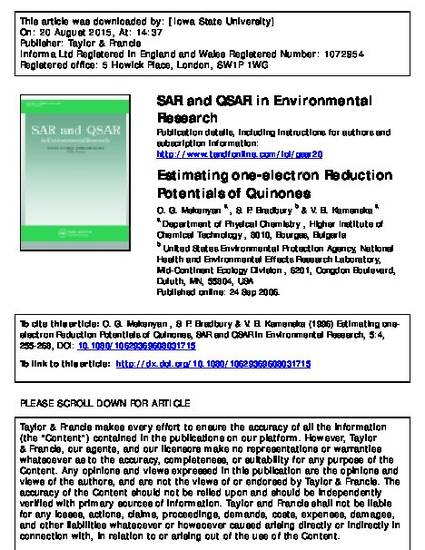
The one-electron reduction potential ∗ E1 7 of benzo-, naphtho-and anthracenequinones is related to their ability to undergo redox cycling and elicit cytotoxicity through oxidative stress. To evaluate a general approach to estimate the E1 7 of benzo-, naphtho-and anthracenequinones, QSAR approaches based on gas phase and solvation based methods were employed. Stereoelectronic descriptors of ground state quinones, respective intermediates of the redox cycle, and the di erences in parameters for the transition between intermediates were evaluated. The variation of E1 7 was correlated with descriptors of the parent quinones and speci c transition parameters. The energy of the highest occupied molecular orbital (the inverse of the ionization potential) and the energy of the lowest unoccupied molecular orbital of the parent benzoquinones were signi cantly correlated to E1 7. With the exclusion of ortho-hydroxy-substituted compounds, the reaction enthalpies for the quinone-semiquinone couple, in combination with volume polarizability, were signi cantly correlated to E1 7 across the entire dataset. The QSARs obtained were found to be consistent with the hypothesis that quinones which have a greater ability to delocalize electron density should have more positive reduction potentials for the quinone-semiquinone couple. In general, models incorporating solvation descriptors were found to be better correlated to E1 7 than those based on gas-phase descriptors, especially when evaluated across structural classes of quinones.
- quinones,
- one-electron reduction potential,
- redox cycling,
- solvation e ects.
Available at: http://works.bepress.com/steven_bradbury/28/
